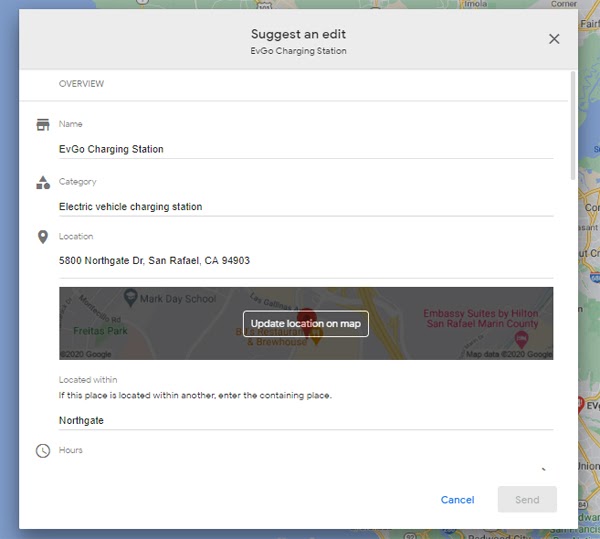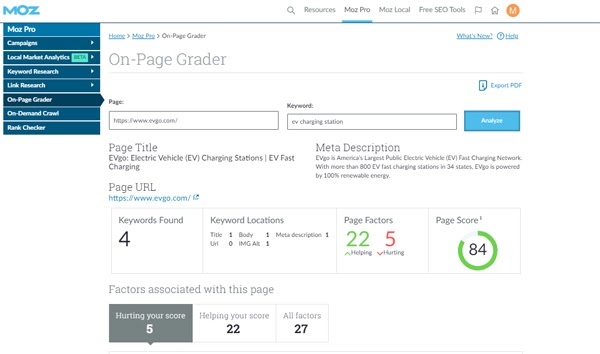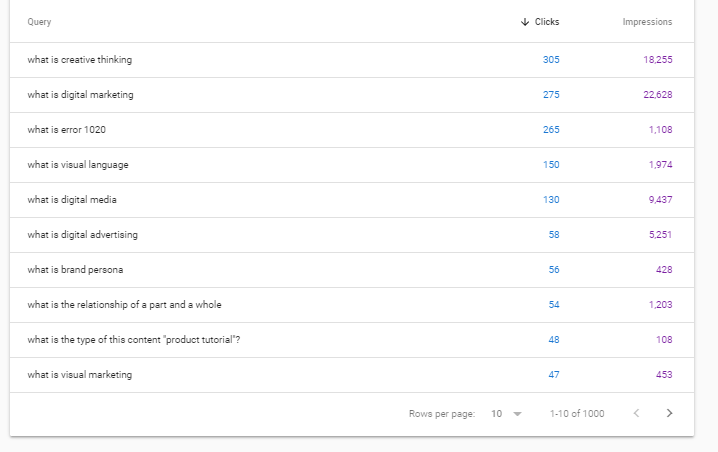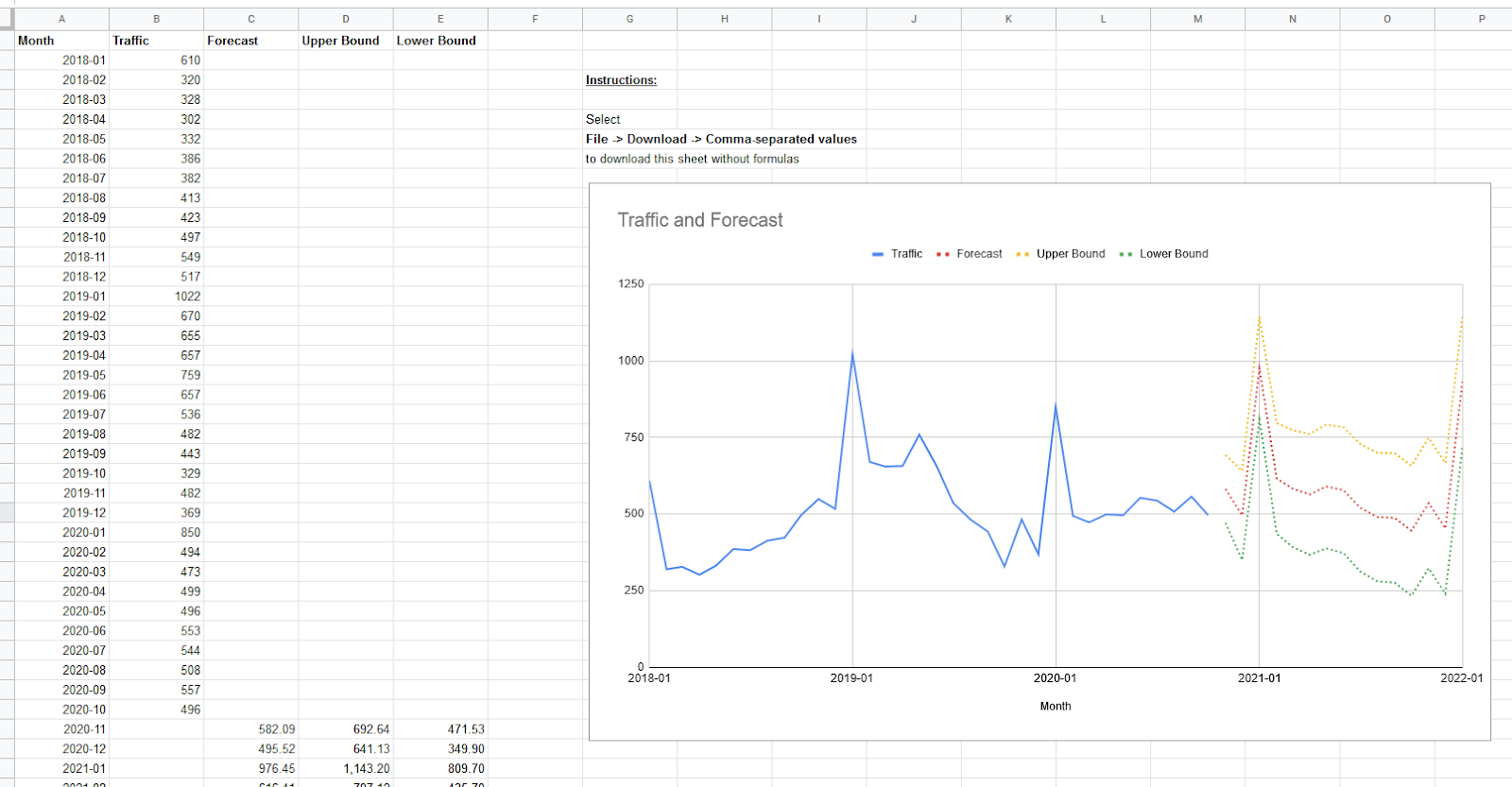Posted by MiriamEllis

Some business models exist in the ditches of Google’s information highways, belonging in local search results, but not well addressed by the official guidelines. Electric vehicle (EV) charging stations exemplify this: They’re all over local packs, finders, and maps, but their models is a bit unusual, and Google has yet to update the guidelines to show exactly how to represent them in the Google My Business setting.
Today, we’ll pull together our own set of EV charging station best practices — based on Google’s rules for similar enterprises — and throw a few free local search marketing tips into the trunk as well.
How to handle your EV charging station Google My Business listings

Whether you’re an owner, in-house marketer, or agency staffer who’s been tasked with promoting a fleet of EV charging stations online, having a presence in Google’s local search results — including local packs, local finders, Google Business Profiles, and Google Maps — should be core to your digital strategy.
While Google’s helpful guidelines don’t specifically address EV charging stations, proof that they’re eligible for inclusion can be seen in the extra special features and categories Google has released for these models. For example, the above screenshot shows the charger icons, charger type designations, and wattage displays in the local results. In the US and UK, Google displays live charger availability data for some networks for consumer convenience. Even the map pins have special icons in them for EV charging stations.
Google definitely knows about them, and wants this industry to get listed.
If you’ve never set up a GMB listing before, Google’s own resources will walk you through the process of filling out and validating a profile for an individual location, but EV charging station marketers are most likely dealing with many locations at once. If you need to get 10 or more locations listed, you’ll be using Google’s bulk upload functionality, instead. You’ll also want to go for bulk verification of these large batches of listings.
But before you get started, here’s special guidance for handling some of the major fields you’ll be filling out for any EV charging station you’re marketing.
Business title
Google wants you to fill out this field with the exact name of the business as it appears in the real world. The majority of the listings I looked at in this sector were adding the words “charging station” to their brand name, which technically violates Google’s guidelines. Just as gas stations are supposed to list themselves as “Shell” or “Valero”, EV charging stations wanting to stick scrupulously to the guidelines should just be “EVgo” or “ChargePoint”.
According to the guidelines, Google wouldn’t want listings entitled “Shell Gas Station” or “EVgo Charging Station”, any more than they’d want “McDonald’s Fast Food Restaurant” or “Macy’s Department Store.”
But now for a home truth: Google says you’re only supposed to put your real-world brand in these titles, but they don’t take much action on enforcing this guideline, and having keywords in the business title that match search language is strongly believed to improve local rankings. So, if you adhere to the guidelines and remove “charging station” from your business titles, your rankings may decrease. This weighting of keywords in the business title is a longstanding issue Google needs to resolve.
Frankly, I think having the words “charging station” in the listing title might actually help users who are just now becoming accustomed to emergent EV technology and trying to understand where to get charged up, but my common sense and Google’s policies are often at odds.
Keep your business title free of other extraneous information like location information, or adjectives like “cheapest” or “best”.
Address
It’s a dominant trend for EV charging stations to be located in the parking lots of busy public spaces, like shopping centers, railroad stations, and business parks. Typically, to be eligible for a GMB listing, a business has to have its own address, but a look at Google’s local search engine results (including Google Maps) shows charging stations being permitted to use the address of the public space. For example, an EV charging station in a strip mall near me is using the same address as the Target that anchors the shopping center.
Additionally, businesses that host a charging station are allowed to have a link on their listings publicizing this feature.
Also related to address, many EV Charging stations will find details on their listings that describe them as “located in” a public space. If the “located in” descriptor is wrong, look up the business on google.com/maps, click the “suggest an edit” button, and try to edit the information in this field:

If you see no correction within a couple of weeks of taking this action, contact Google My Business support and explain what’s going on.
Phone number
We’ll take our cue here from Google’s requirements of ATMs and kiosks. As I previously covered in my column on local product kiosks, the EV charging stations you’re marketing need a customer support phone number.
Again, this is one of those unusual grey areas. Normally, it’s standard advice for each location of a business to have a unique phone number. But, for EV charging stations, this obviously isn’t practical. Rather, be sure your listings have your help hotline number for customer service needs.
A word to the wise: Google has sometimes been prone to conflating listings with too-similar information. Having dozens, hundreds, or thousands of listings with the same brand AND phone number on them could potentially result in the accidental creation of duplicate listings. Large, multi-listing enterprises like EV charging brands might want to check out the automated duplicate detection and resolution services offered by Moz Local so that pesky duplicates aren’t interfering with listings management, visibility goals, and consumer direction.
Category
“Electric vehicle charging station” is the proper primary category for you, and my search through listings and GMB category databases is only finding one other related category, “electric vehicle charging station contractor” which may or may not be relevant to the business you’re marketing.
Hours of operation
Google’s guidelines state that gas stations should list the hours of operation that their pumps are available, and for most EV charging stations, this would presumably be 24 hours a day. As stated above, you’ll probably be uploading your data to Google via a bulk upload spreadsheet and the proper configuration for indicating 24-hours-a-day in the spreadsheet is 12:00AM-12:00AM.
URL
You’ll be allowed to include a website link on each listing you create. The best user experience I’m encountering on EV charger station listings is when the listing links to a landing page for the location I’m researching. On the flip side, you may get a ranking boost if you link to the brand’s homepage, instead, due to homepages typically having greater Page Authority than landing pages.
Photos/Videos
Make each listing stand out for customers by adding a few photos of the charger’s location. Given the fact that so many chargers are in vast parking lots, try to take some shots that illustrate the relationship of the station to the largest anchor business near it. This will help orient customers. And, given the newness of EV technology, uploading a video of how to use each type of charger would be extremely helpful to new electric vehicle owners.
Reviews
Looking around the SF Bay area, I couldn’t help noticing how few reviews these entities are receiving, meaning there are easy wins out there for any EV charger brand that makes a concerted review acquisition effort. If you’re building out landing pages on the brand’s website for each charging station locale, include a strong call to action and link to leave a review on Google on these pages. You can also use a free review link generator and then shorten the URL using a service like bitly for text or email-based review requests.
Just don’t ask for reviews in bulk; if you get too many at once, Google may filter them out as suspicious. And never incentivize reviews in any way — it can result in review loss, penalties, and legal actions.
Questions & Answers
Unsurprisingly, EV charging station listings show customers using Google’s Q&A feature to ask about costs and how to use the kiosks. These are leads for the brand and should be answered by the brand, rather than being left up to the public for responses of varying quality. If you’re using Moz Local to manage your listings, the dashboard will alert you each time a new question comes in on any of your listings.
Google Posts
Google Posts are a great way to make a brand stand out from less active competitors by microblogging persuasive content that appears on your listings, but for the typical EV charging brand, this feature is problematic. Google doesn’t allow large chains to post in bulk to their listings. There are some third-party services that facilitate hacks for this scenario.
Listings beyond Google
Google may be your dominant source of local business listings, but don’t hit the brakes there. Moz has mapped out the partners in our location data distribution network that currently support listings for EV charging stations. Talk to us about building your presence in key mapping applications like Apple Maps, search engines like Bing, aggregators like Infogroup, and mobile navigation providers like Navmii. Moz Local can help you get listed on multiple platforms so that potential customers can find your charging station locations via their preferred search methods.
Local search marketing tips for EV charging stations

JP Morgan predicts that EVs and HVs will make up 30% of total vehicle sales in the next five years and Statista estimates there are about 25,000 charging stations in the US. It’s big business, and while the convenience of charging at home can’t be beat, the presence of chargers and superchargers all over cities will do much to increase awareness of the rise of the EV, and to ease the transition away from fossil fuel transportation.
As a resident of California — the state with the most electric vehicles and also the state experiencing some of the worst devastation from Climate Change — every new charging station that pops up on Google Maps is a sign of hope to me. But I’ll be frank; I’m not a “car” person, and despite making a concerted effort over the past couple of years to understand how I could personally transition from a worried, gas-powered driver to a proud EV traveler has taught me that it’s a road paved with countless questions.
And that’s actually good news for EV charging station brands!
Whether you’re marketing EVgo, Blink, Tesla, ChargePoint, or the dozens of other charging solutions, your online marketing strategy is going to hinge on publishing content that solves consumers’ problems by answering their questions. Luckily for your industry, customers’ questions are so abundant that they are paving the way for you to develop absolutely fantastic website content that will support your organic and local rankings over time as you develop authority.
Here’s a simple six-step workflow for getting it right:
1. Survey customers
Making a minor investment in survey tech will let you directly ask the public what they want most from charging stations. Is it speed, location, more ports, better instructions, different payment options? Find out and document your learnings.
2. Analyze industry reviews and questions
Look at the common themes in your online reviews. For example, one thread I see running through the EV charging vertical is complaints about sitting in hot cars for 30+ minutes while charging up. When you think about it, gas stations provide shade at the pumps, though patrons are only there for ten minutes. If your customers are being inconvenienced in the summer heat, would properties permit you to build a canopy, or perhaps even better, plant some native trees to double down on your green goals?
Moz Local will surface the 100 most common words in your reviews for sentiment analysis purposes. Dig deeply into these for content inspiration and structural improvements.
And check out the positive and negative sentiment your competitors’ reviews contain. What is the competition getting wrong that you could get right? If you find opportunities like these, be sure you’re writing about them.
3. Fire up keyword research tools

- How do electric car charging stations work?
- Where can I charge my electric car?
- What is the best EV charging station?
- How to find free charging stations
- How many miles does a Tesla get per charge?
- Are EVgo stations free?
- Can I use ChargePoint at EVgo?
- What is a level 3 charging station?
Questions truly abound in the EV charging space. Moz Pro Keyword Explorer lets you type in keywords and phrases you feel could be important to the business you’re marketing, and then filter the results to see questions like the ones in my list, above. If you sign up for a free Moz community account, you can make 10 free queries a month or upgrade to a paid account for more robust keyword research.
Other free options include Google’s Ads Keyword Planner and the unpaid version of Answer the Public.
Document your findings so that you have created a list of questions around which you can base content publication.
4. Take a peek at Google Trends
Google Trends will show you interest in topics across time related to EV charging stations, and you can even see this broken out by regions of a country to help you localize your marketing. My glance at this data shows that interest in this subject took a hit when the COVID-19 pandemic emerged but is now steadily rising again. Glean further insights from this tool for topics you should be covering.
5. Analyze the competition

If you have a Moz Pro account, you can use Moz’s On-Page Grader feature not just to look at pages on your own website to see how to improve their optimization, but also to analyze what your competition is getting right and wrong. If you can find weaknesses in the strategy of a tough competitor, you can go one better with the actionable optimization tips On-Page Grader provides.
Look carefully at what your competitors are writing about on their websites and social accounts. If they’re covering a topic your keyword research hasn’t surfaced, note it down.
6. Get writing!
Now, take the list of questions and keyword phrases you’ve discovered, group them by topics, and begin creating pages for them on your website, or posts on the brand’s blog, providing answers. Some pages may be short, and others may be long — the rule of thumb is simply to cover each question thoroughly. You may find that some topics are best answered via other media, like short videos. That’s great, if you can produce them, but don’t forget to provide written transcripts.
Your findings can also fuel your social media posting, your Google posts, and provide the top FAQs you can ask and answer via Google Questions & Answers on your Google Business Profiles.
Finally, remember that marketing requires active promotion. Don’t just let your content sit on your website hoping someone will arrive to read it. Actively promote your best pieces via social media, to local print and online media journalists, and in local community hubs, like neighborhood websites and hyperlocal blogs. Work to build real relationships in the cities where you’re marketing your charging station locations so that you are always increasing awareness of your brand’s commitment to making towns and cities better places to live.
Have questions? Ask me in the comments. I’m personally rooting for the rapid spread of EV charging stations across the US and around the world, and if you’re marketing this model, I’d love to hear from you!
Sign up for The Moz Top 10, a semimonthly mailer updating you on the top ten hottest pieces of SEO news, tips, and rad links uncovered by the Moz team. Think of it as your exclusive digest of stuff you don't have time to hunt down but want to read!







































